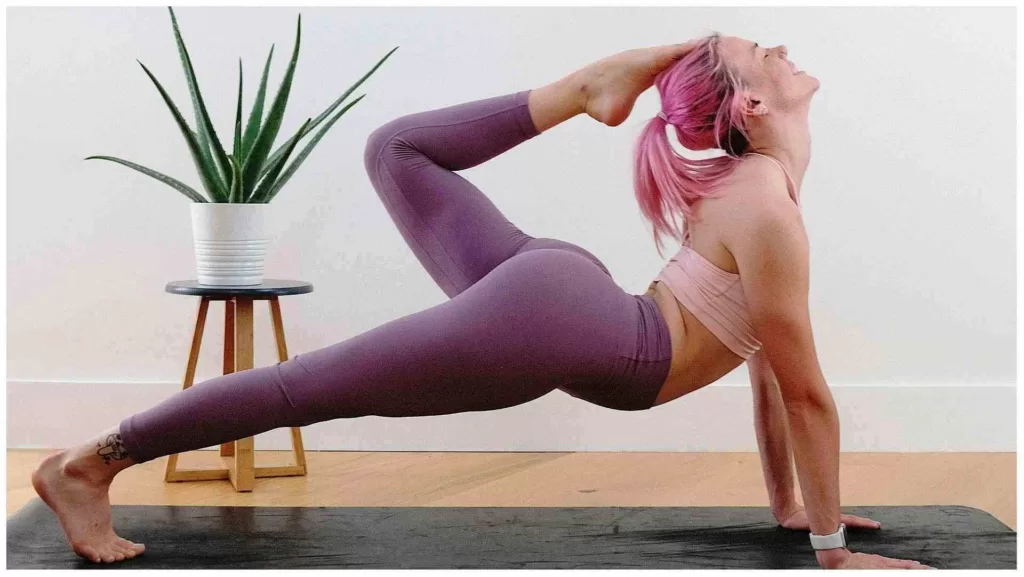Yoga has been practiced for thousands of years and has become increasingly popular in recent times due to its numerous health benefits. From reducing stress and anxiety to improving flexibility and strength, yoga offers a holistic approach to physical and mental well-being. Regular practice of yoga has been shown to boost the immune system, lower blood pressure, and alleviate chronic pain. Whether you’re a beginner or a seasoned practitioner, incorporating yoga into your routine can have a profound impact on your overall health and happiness.
What is Yoga?
Yoga is an ancient Indian practice that dates back thousands of years. It involves physical postures, breathing techniques, meditation, and philosophical principles aimed at promoting physical and mental well-being. Yoga is more than just exercise, it is a holistic approach to health that incorporates the body, mind, and spirit. Regular practice of yoga has been shown to reduce stress, improve flexibility, and increase strength and balance. Additionally, yoga can also enhance mindfulness, boost the immune system, and promote feelings of peace and relaxation. Today, yoga is widely practiced all over the world and is available in many different styles to suit individual needs and preferences.

What is the difference between Pilates and yoga?
Pilates and yoga are both exercise practices that focus on physical and mental well-being, but there are key differences between the two.
- Origin: Pilates was created by Joseph Pilates in the early 20th century, while yoga has a much longer history dating back thousands of years.
2. Focus: Pilates places more emphasis on strengthening the core muscles and improving posture, while yoga focuses on the mind-body connection and spiritual growth.
3. Movements: Pilates movements are precise, controlled, and repetitive, while yoga poses are often more flowing and dynamic.
4. Equipment: Pilates often involves the use of equipment such as the reformer and the mat, while yoga is typically practiced on a mat without any equipment.
5. Intensity: Pilates can be a more intense workout, while yoga can be more relaxed and gentle.
Overall, both Pilates and yoga offer unique benefits and can complement each other in a well-rounded exercise regimen.
Who is the father of yoga?
The origin of yoga dates back thousands of years, making it difficult to identify a single founder or “father of yoga.” However, the roots of modern yoga can be traced back to ancient Indian philosophy and the Hindu scriptures known as the Vedas.
According to ancient texts, Lord Shiva, also known as Adiyogi, is regarded as the father of yoga. He is not considered a god, but instead, the first yogi who achieved 100% enlightenment and the ability to use 100% of his brain, some 15,000 years ago.
The sage Patanjali is often credited as the compiler of the Yoga Sutras, a collection of aphorisms outlining the philosophy and practices of yoga. As a result, Patanjali is often referred to as the “father of modern yoga.” However, it’s important to note that yoga is a rich tradition that has evolved and been passed down through generations of practitioners and cannot be attributed to any one individual.
Which year did yoga start? And Types of Yoga
Yoga has its roots in ancient Indian philosophy and has been practiced for thousands of years. The exact date of its origin is not known, but references to yoga can be found in Hindu scriptures dating back to 3000 BCE.
There are so many different types/styles of yoga, each type has its own unique focus and techniques. Among them find some best and most popular types of yoga include:
Hatha Yoga: A gentle form of yoga that focuses on physical postures, breathing exercises, and meditation.
Vinyasa Yoga: A dynamic style of yoga that emphasizes fluid movements and a continuous flow between poses.
Ashtanga Yoga: A fast-paced and physically demanding style of yoga that follows a set sequence of poses.
Iyengar Yoga: A form of yoga that places emphasis on proper alignment and the use of props such as blocks and straps.
Bikram Yoga: A hot yoga style that involves performing a set series of poses in a room heated to 105°F.
Kundalini Yoga: A style of yoga that incorporates dynamic movements, breathing exercises, and meditation to awaken the energy at the base of the spine.
These are just a few examples of the many different styles of yoga that are available. Whether you’re a beginner or an experienced practitioner, there is a type of yoga that can meet your needs and help you achieve your goals.

What are the 20 benefits of yoga?
1. Reduces stress and anxiety
2. Improves flexibility and balance
3. Increases strength and endurance
4. Boosts the immune system
5. Enhances mindfulness and concentration
6. Improves breathing and lung capacity
7. Promotes better sleep
8. Lowers blood pressure
9. Alleviates chronic pain
10. Helps with weight management
11. Enhances cardiovascular health
12. Increases energy and reduces fatigue
13. Improves digestion
14. Promotes emotional well-being
15. Reduces symptoms of depression
16. Supports a healthy pregnancy
17. Promotes healthy aging
18. Increases self-awareness and body-awareness
19. Improves athletic performance
20. Supports a spiritual practice and connection.
How yoga affects the brain?
Yoga has been shown to have a number of positive effects on the brain, including:
1. Reduces stress and anxiety: The combination of physical postures, breathing exercises, and meditation in yoga practice can help activate the relaxation response, reducing levels of stress hormones in the brain.
2. Increases mindfulness: Practicing yoga regularly can improve attention, focus, and concentration, which can lead to enhanced mindfulness and a greater sense of presence at the moment.
3. Boosts mood: Yoga has been shown to increase levels of the neurotransmitter serotonin, which is associated with feelings of happiness and well-being.
4. Enhances brain function: Studies have shown that yoga can improve cognitive function and brain processing speed, and may also have neuroprotective effects that can help slow age-related cognitive decline.
5. Supports neuroplasticity: The physical and mental practices involved in yoga can help improve neuroplasticity, and the brain’s ability to form new connections and adapt to change.
These are just a few examples of how yoga can affect the brain. Whether you’re looking to reduce stress, improve cognitive function, or simply feel happier and more relaxed, practicing yoga can be a powerful tool for promoting brain health.
What are the 5 mental benefits of yoga?
1. Reduces stress and anxiety: Through a combination of physical postures, breathing exercises, and meditation, yoga can activate the relaxation response, reducing levels of stress hormones in the brain and helping to alleviate symptoms of anxiety.
2. Increases mindfulness: Regular yoga practice can improve attention, focus, and concentration, leading to enhanced mindfulness and a greater sense of presence at the moment.
3. Boosts mood: Practicing yoga has been shown to increase levels of the neurotransmitter serotonin, which is associated with feelings of happiness and well-being.
4. Supports emotional regulation: Yoga can help individuals develop greater emotional regulation and resilience, allowing them to better manage feelings of stress, anger, and frustration.
5. Enhances self-awareness: By focusing on the mind-body connection, yoga can help individuals increase their self-awareness and understanding of their thoughts, feelings, and physical sensations, leading to greater insight and personal growth.
Different Yoga types for people of different ages
Yoga can be beneficial for people of all ages, and there are several different types of yoga that are well-suited to different stages of life. Here are a few examples:
Kids: For children, yoga can be a fun and engaging way to build physical strength, flexibility, and coordination. Yoga games, stories, and songs are often used to make the practice accessible and enjoyable for kids.
Teens: For teens, yoga can be a great way to manage stress, build self-confidence, and develop healthy relationships with their bodies. Vinyasa, Ashtanga, and Hatha yoga are popular types of yoga for teens.
Adults: For adults, yoga can provide a range of physical and mental health benefits, including improved flexibility, strength, balance, and stress management. Popular types of yoga for adults include Vinyasa, Hatha, Iyengar, and Bikram.
Seniors: For seniors, yoga can help improve flexibility, balance, and mobility, reducing the risk of falls and promoting better physical function. Gentle, slow-paced styles of yoga, such as Hatha, Chair Yoga, and Tai Chi, are well-suited to seniors.
Remember, it’s always a good idea to consult with a doctor before starting any new exercise program, especially if you have any medical conditions. They can help you determine which type of yoga would be best for your needs and abilities.
Who should not do yoga?
1. While yoga can be beneficial for many people, it’s not right for everyone. Here are some groups of people who may want to avoid yoga or take extra precautions:
2. Pregnant women: Pregnant women should check with their doctor before starting a yoga practice, as some poses may not be safe for their growing baby.
3. People with certain medical conditions: Individuals with medical conditions such as high blood pressure, heart disease, neck or back pain, or recent surgery may want to avoid certain types of yoga or seek out a modified practice.
4. People with injuries: If you have an injury, it’s important to consult with your doctor and a qualified yoga instructor to determine which poses are safe for you and how to modify your practice to avoid further injury.
5. People with joint problems: Some types of yoga involve putting a lot of weight on the hands and knees, which can be problematic for people with joint problems such as osteoarthritis or rheumatoid arthritis.
6. People with balance problems: Some yoga poses require good balance, so individuals with balance problems or a history of falls may want to seek out a modified practice or avoid certain poses.
It’s important to listen to your body and seek out the guidance of a qualified yoga instructor if you’re unsure about whether yoga is right for you. With the right modifications and precautions, yoga can be a safe and effective way to improve physical and mental health for many people.
What are the risks of yoga?
While yoga is generally considered a safe form of exercise, there are some potential risks to be aware of. Here are a few:
1. Injuries from overstretching: If you push too hard in your yoga practice, you can risk overstretching or straining your muscles. This can increase the pain, and discomfort, and may even cause injury.
2. Dehydration: Some forms of yoga, especially those that are physically demanding, can result in significant fluid loss. It’s important to drink enough water before, during, and after your practice to avoid dehydration.
3. Heat exhaustion: Practicing yoga in hot environments, such as hot yoga studios, can increase your risk of heat exhaustion. It’s important to stay hydrated and take breaks as needed if you start to feel overheated.
4. Worsening of medical conditions: If you have a medical condition, such as high blood pressure, heart disease, neck or back pain, or recent surgery, it’s important to check with your doctor before starting a yoga practice. Some poses or types of yoga may not be safe for you.
5. Staph infections: If you practice yoga in a studio, it’s important to be aware of the risk of staph infections, which can be spread through contact with contaminated surfaces. To minimize your risk, avoid practicing yoga barefoot and bring your own mat, towel, and props to avoid coming into contact with potentially contaminated surfaces.
By being aware of these potential risks and taking steps to minimize them, you can enjoy the many benefits of yoga while minimizing your risk of injury or other health problems.
Is yoga alone enough exercise?
Yoga can be a great form of exercise, but it’s important to remember that it may not be enough on its own to meet all of your fitness needs. Here are a few reasons why:
1. Cardiovascular health: While yoga can help improve flexibility, strength, and balance, it may not provide enough cardiovascular exercise to boost your heart rate and improve cardiovascular health. To address this, you may want to supplement your yoga practice with other forms of cardio exercise, such as running, cycling, or swimming.
2. Muscle mass: While some forms of yoga, such as power yoga or Ashtanga, can be physically demanding, they may not provide enough resistance to build significant muscle mass. To address this, you may want to incorporate strength training exercises, such as weightlifting or bodyweight exercises, into your fitness routine.
3. Caloric burn: While yoga can be a great way to relax and de-stress, it may not provide the same level of caloric burn as more intense forms of exercise, such as running or high-intensity interval training.
Ultimately, whether or not yoga alone is enough exercise will depend on your individual fitness goals and needs. If you’re looking to improve cardiovascular health, build muscle mass, or burn a significant number of calories, you may want to supplement your yoga practice with other forms of exercise. However, if your goal is to improve flexibility, balance, and overall well-being, yoga may be all you need.




